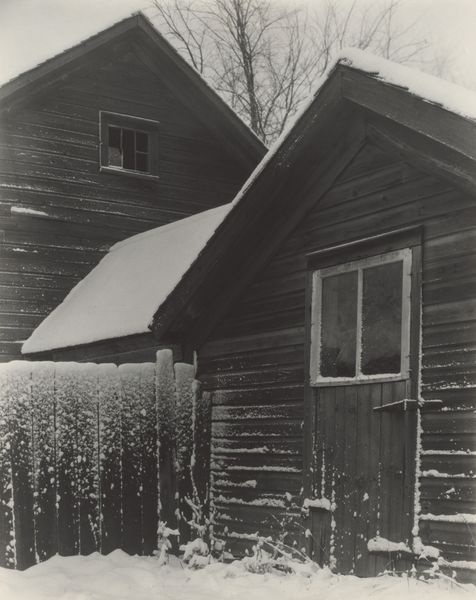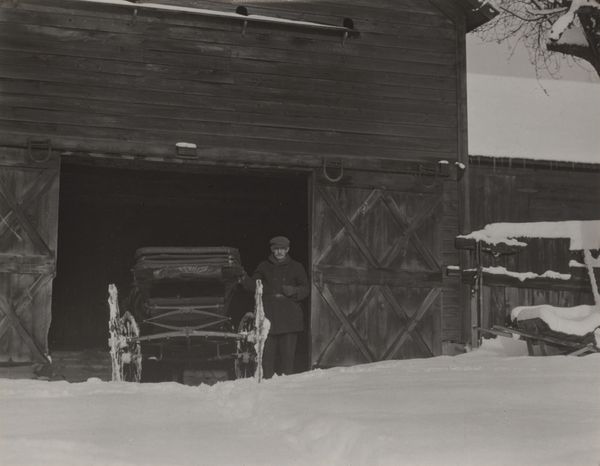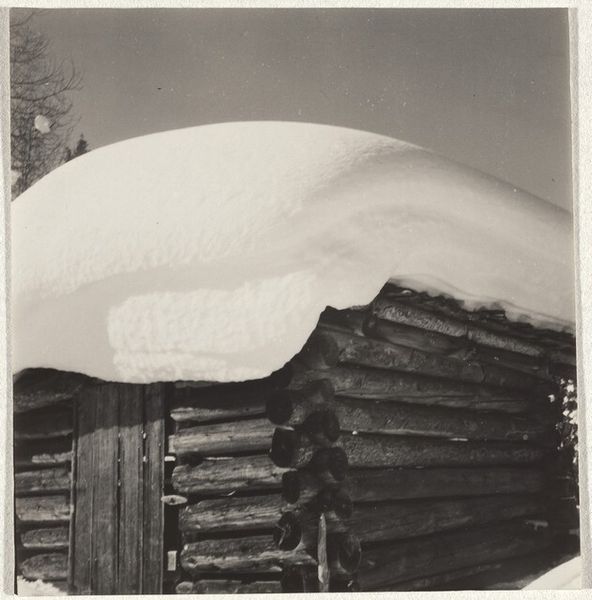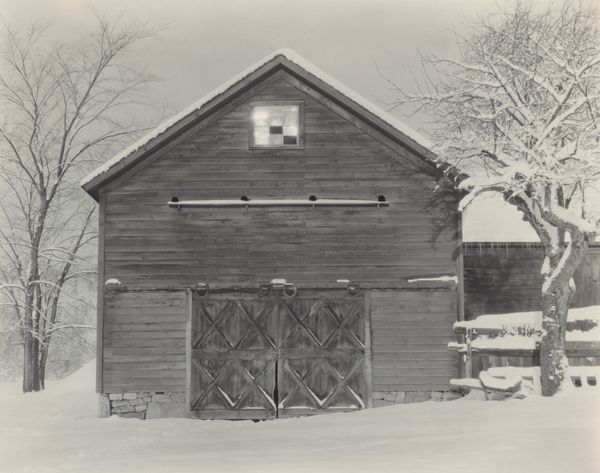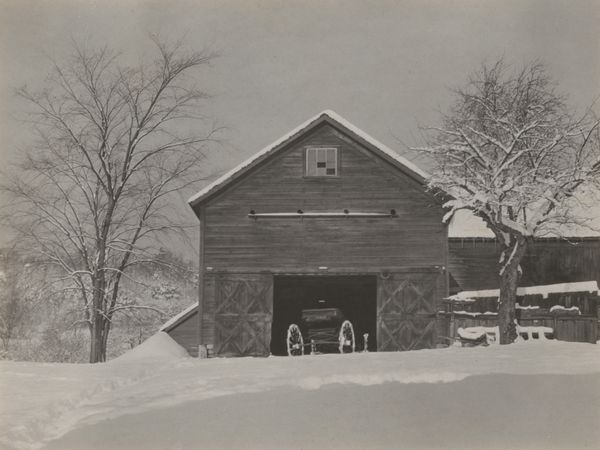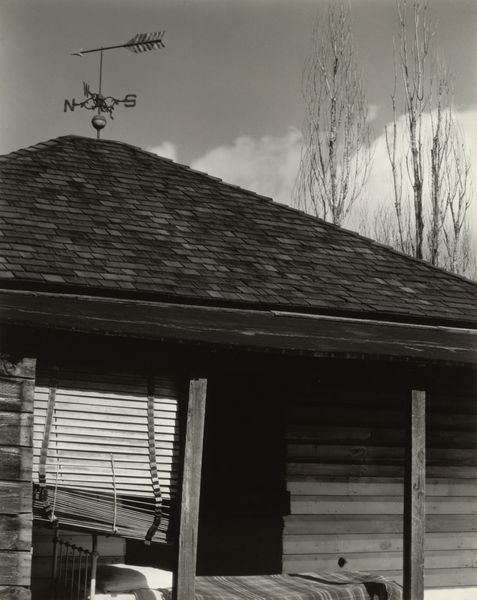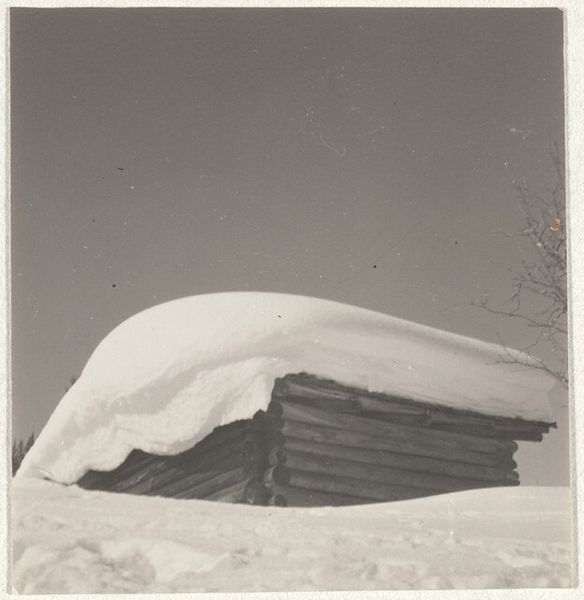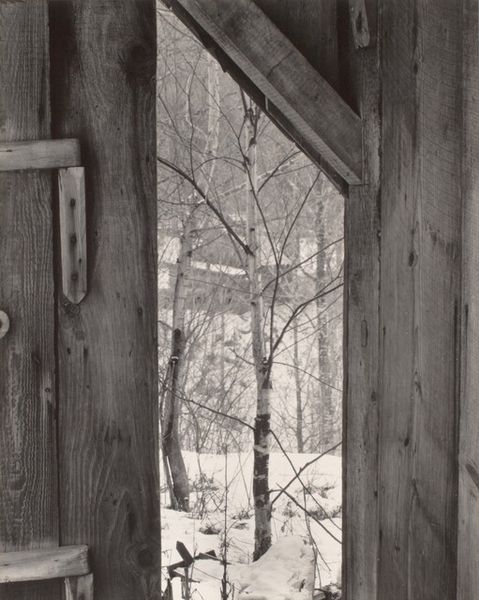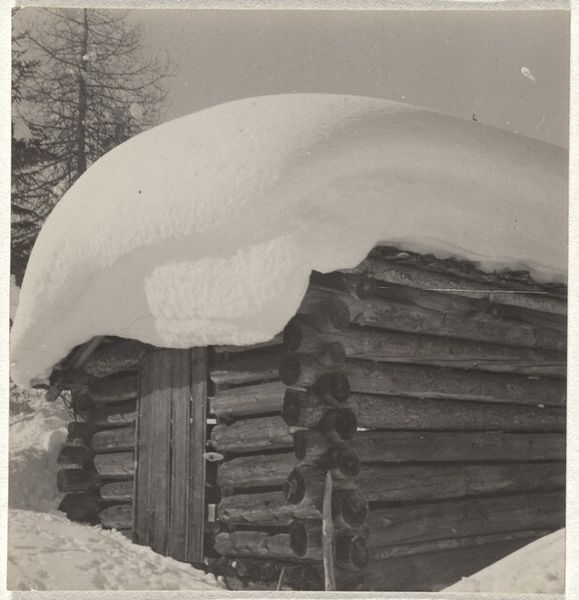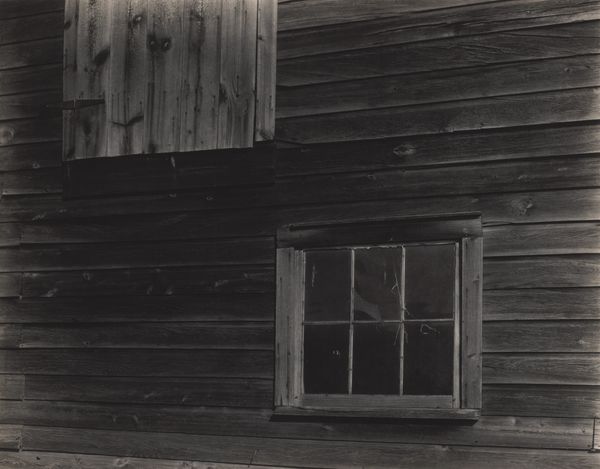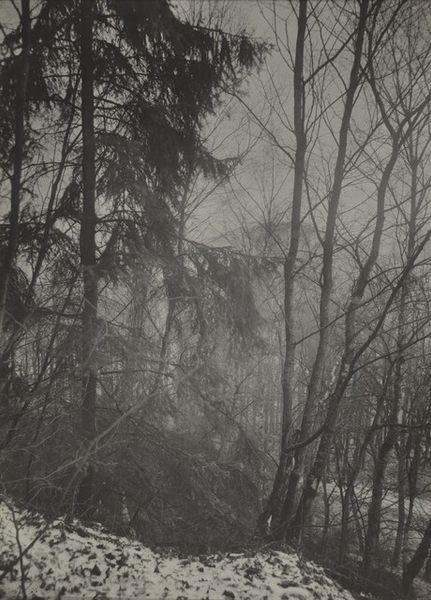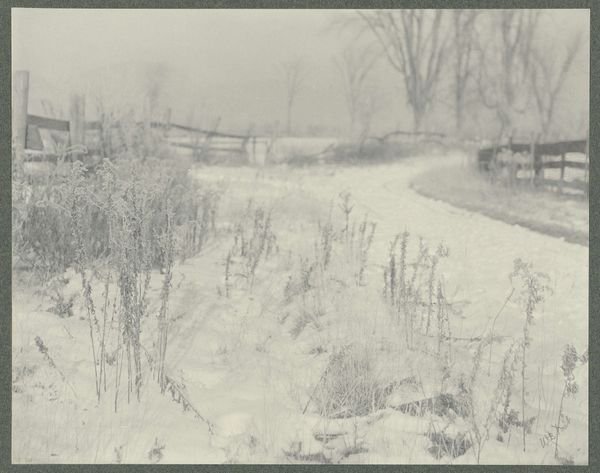
photography
#
black and white photography
#
pictorialism
#
landscape
#
photography
#
black and white
#
monochrome photography
#
monochrome
#
realism
#
monochrome
Dimensions: sheet (trimmed to image): 24.5 × 19.2 cm (9 5/8 × 7 9/16 in.) mount: 55.8 × 46.4 cm (21 15/16 × 18 1/4 in.)
Copyright: National Gallery of Art: CC0 1.0
Editor: This is "Barn & Snow," a black and white photograph taken in 1923 by Alfred Stieglitz. The strong contrast between the dark, textured wood and the smooth snow feels so stark, so immediate. What do you make of it? Curator: The photograph immediately brings to mind the inherent physical properties of both wood and snow: the wood, solid and enduring due to the labor invested in it, stands in contrast with the snow, ephemeral and transformative as a consequence of weather patterns. We're seeing not just an image, but also a document of the material conditions of rural life and architecture in early 20th-century America. How do you perceive the broken window impacting this? Editor: It adds another layer of meaning, I think. The broken window contrasts against the pristine snow, which makes me consider the socio-economic aspect. Was the barn neglected? Was there an intention for it to degrade that way? Curator: Exactly. That broken window is a vital element. Think about the physical labor required to build that barn initially, versus the economic realities that lead to its decay and neglect. Stieglitz, through his choice of subject and careful composition, invites us to consider the material history embedded in this seemingly simple scene. It pushes the question about what kind of societal conditions leave it to degrade? Editor: So, it's less about the romanticism of nature, and more about the physical world, human intervention, and the cycle of labor and decay. It reveals socio-economic aspects of the time through these mundane material things. Curator: Precisely. By examining the labor embedded in these material elements, we move beyond just admiring a pretty picture to understanding its cultural implications. The photo reflects consumption and possibly discard. It’s fascinating, isn’t it? Editor: It is! It's definitely a new way to look at photography. I will start viewing all art as physical documents. Thanks!
Comments
No comments
Be the first to comment and join the conversation on the ultimate creative platform.

